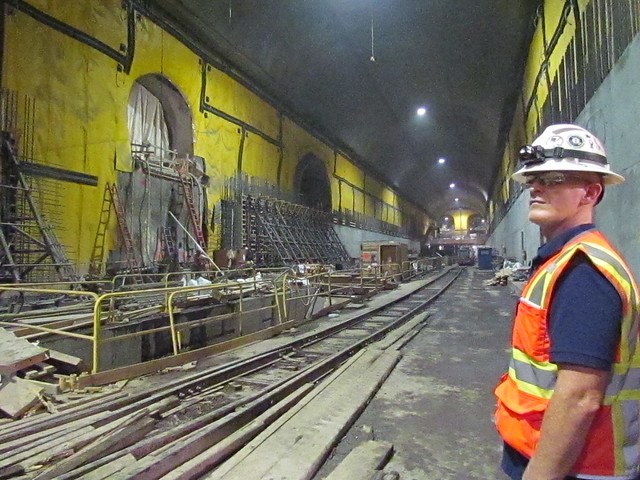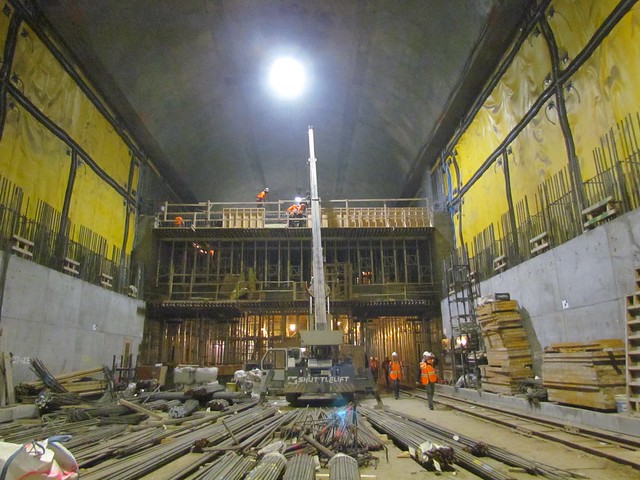
Amtrak wants a tunnel through Port Authority's jurisdiction. A third party may emerge to claim this turf battle.
As momentum grows to move forward on the Gateway Tunnel, an interesting and obvious turf battle is taking shape. According to a story published late on Friday, our region’s politician are working out a deal for a new trans-Hudson tunnel that may lead the much-maligned Port Authority to be a participant rather than a leader on this project. Considering how much of what the PA has touched lately has turned to lead, it’s a plus to keep their hands off this project as much as possible, and the move seems to indicate a certain lack of trust federal officials have in this bi-state entity right now.
Dana Rubinstein and David Giambusso broke the story on Politco New York. The two write:
Multiple sources have told POLITICO New York the two states, the Port Authority of New York and New Jersey and federal officials are now hammering out a framework for a new entity dedicated solely to building the project. Negotiations are continuing, but one source said the entity’s board would likely be populated by two Port Authority representatives, one representative from Amtrak and another from the federal transportation department. The structure of the board is still in flux, the source said…
According to several sources knowledgeable about the state of discussions, the various parties are now negotiating the terms of a compromise. A final proposed framework is expected to be agreed upon soon, according to one of those sources. Neither governor responded to a request for comment. [New York Senator Chuck] Schumer’s spokesman, Angelo Roefaro, would only say that since his speech in August, the senator has been meeting with stakeholders “to make the case for a separate authority.”
While the Port Authority’s reputation is a factor in this debate, another driving factor motivating Schumer involves political control. The New York Senator has long stated his preference for a new entity that better access federal funding sources while both New York and New Jersey governors have pushed the Port Authority as the entity responsible for building out the tunnel. As we’ve seen over the years, Andrew Cuomo and Chris Christie have turned the Port Authority into fiefdoms of patronage, and Schumer knows maintaining federal control over this project involves removing decision-making capabilities from the states. As we learned during the ARC debacle, allowing one party to unilaterally cancel a project harms the entire region, and a new entity can dissipate power while ensuring equality in funding obligations.
What I hope a new agency can do as well is rein in costs. It’s not quite clear how much the bill will be for the Gateway Tunnel. Recent estimates have ranged as high as $20 billion, but that figure could include additional work prepping the area around New York City for a high-speed rail line. It’s also an exceedingly high figure and one that could derail the tunnel before work begins. As with the MTA’s projects, we need to find a way to control costs on a new Amtrak tunnel that enables us to build competitively. Planners should first identify how much this project should cost based on similar tunneling efforts throughout the world and then work backwards to understand why New York’s costs are so inflated. Then we can build.
So the discussions and the political negotiations are moving forward while money remains an unknown. For now, that’s OK, but if Schumer and the feds reach a deal with the Port Authority and its two bosses, the dollars will take centerstage. Perhaps we shouldn’t wait much longer to begin that planning effort. As we’ve seen with the Second Ave. Subway, waiting accomplishes nothing, and the region shouldn’t be waiting around much longer for more trans-Hudson rail capabilities. It can’t really afford to.





















